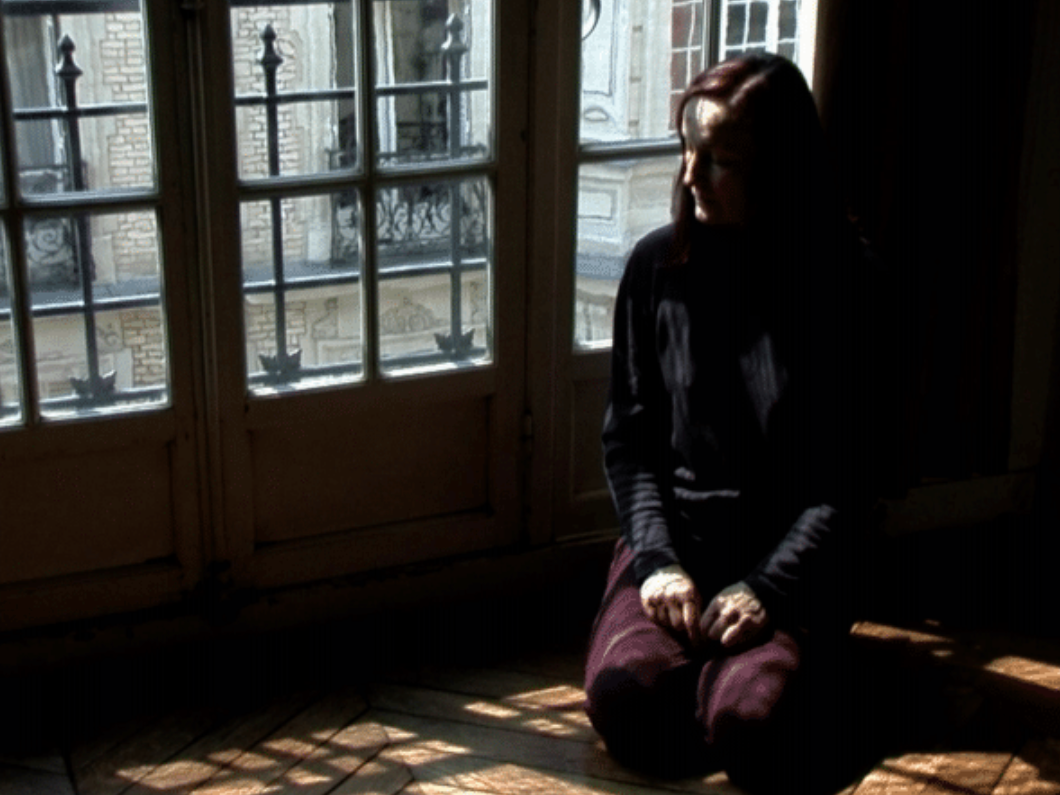Jackals and Arabs (2011, 10 min. 35 sec.)

“Our art is a way of being dazzled by truth: the light on the grotesquely grimacing retreating face is true, and nothing else.” (Kafka)
“Kafka did not find a solution and has never awoken from his nightmare.” (Brecht)
Franz Kafka’s parable, written in 1917 on the eve of the Balfour Declaration (the capitalist-imperialist letter of promise that undergirds Zionism) is, through Straub, a ferocious picture, a hatred of hate.
The story’s three figures, “Jackal”, “European”, “Arab”, are of deranged belief and position; they do bat- tle, as seething metaphors themselves, stuck in a desert nightmare, in language flashing transparent and opaque across the dialectics of parable, reality, and history.
Kafka foresaw much: the dependencies of all hatreds – racial, religious, capital – and, as clearly as Lenin, a Western colonial power poised there to inflame and exploit them.
We’ve seen these antagonisms before, this fuming, these justifications, this boiling point – on the world stage, even in the streets. Schakale und Araber estranges, to the maximum, the idea of “immemorial” blood feuds – innate and permanent war – by presenting a vicious, triangular trap from which one can only wish to liberate oneself.
Hate, injustice, cultic belief, masters, messianism, lackeyism, faux naivete all fly out of these terrifying figures with their backs to the window – whereas in Huillet/ Straub to look out the window is where possibility lies (Bach, Lilith in Der Bräutigam, Therese in Klassenverhältnisse).
Schakale und Araber is a plea, without resembling a plea – a staging of odious sentiments, with an unsaid demand: bring about a time when man is no longer a wolf to men.
If parable is possible in the cinema, Straub verifies its disquiet, increases it. Originally to be shot in the Egyptian desert during the shooting of Trop tot, trop tard, ultimately this fulmination of a film, this conflict-against-conflict, was shot in a small space between the dining room table and balcony window of Straub’s Place de Clichy apartment. With this domestic base (strange fidelity to Kafka: it was in a similar domestic corner that he wrote these stories, suffered and fought), its concentration of figures, brevity, and frontality, Schakale und Araber rediscovers the compressed, high-relief passions of early cinema.
After attending the 11th Zionist Congress in Vienna, 1913, Kafka described Zionist racial discourse as “ewiges Geschrei” (permanent shrieking, endless shouting, eternal screaming), a Brechtian observation, and put aspects of Judaism’s rituals and laws in other animal tales (Investigations of a Dog, 1922), for greatest astonishment. Straub and his col- laborators increase the Brechtian Kafka. Good estrangers of behavior, these animals, and by animals, I mean man, shot through the man-made apparatus of cinema.
In its sudden and raw appearance in 2011, Schakale und Araber felt both a “weapon of criticism” (of humanity) and a “criticism of the weapon” (video). Straub deliberately shot against the light. The sun is not sweet here but burning, the air not full but suffocating. White phosphorus, video voltage. For maybe the first time in Huillet/Straub the hoarseness of the medium passed into the material, even if to serve the subject.
This video asks for not a moment of weakness from the viewer. The players on-screen use muscles not seen in cinema for 85 years. Barbara Ulrich, with a stunned yet matter-of-fact countenance, looks exactly like Mae Marsh in Intolerance, but suppressing even more. Giorgio Passerone enters heavy as one of Straub’s few high villains, as opposed to the more frequent light-footed charmed ones (Erich von Machorka-Muff, Kreon [Antigone], Carlo the Bald [Umiliati]; “If a villain always looked like a villain you’d be disarmed when you met one in real life” said Huillet of Albin in Othon). Passerone as the “Arab” stiffens, boils, turns cylindrical and angular at once, like a Barlach sculpture, is Expressionist, nearly Eccentrist in his acting, like Emil Jannings and Paul Wegener, as he emotes using muscles of the face, neck, and throat. So proud is he of a momentary dominance, that when he lifts his arm, it is turned inward, palsied.
“Sympathetically I observe,” wrote Brecht of a Japanese carving, “The swollen veins of the forehead, indicating / What a strain it is to be evil.”
Image from Schakale und Araber (Danièle Huillet & Jean-Marie Straub, 2011)
With thanks to Oscar Pedersen, Viktor Retoft and Balthazar.
This article was originally published in Balthazar no. 9, 2023, dedicated to the work of Danièle Huillet and Jean-Marie Straub.

